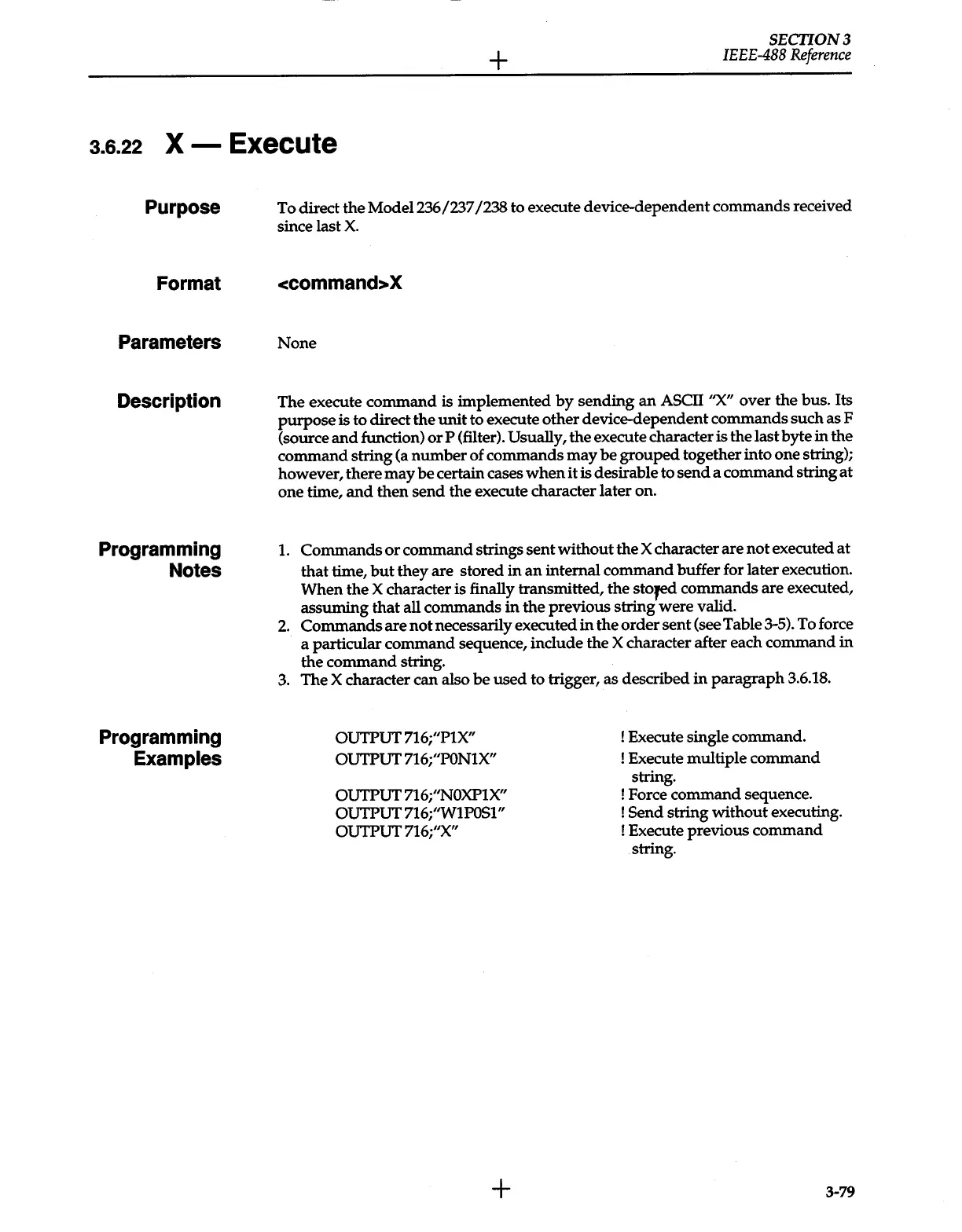+
SECTION3
IEEE-488
Reference
a.s.22
X - Execute
Purpose
Format
Parameters
Description
Programming
Notes
Programming
Examples
To direct
the
Model236/237
/238
to execute device-dependent commands received
since last
X.
<command>
X
None
The execute
command
is implemented
by
sending
an
ASCIT
"X"
over
the
bus. Its
purpose
is
to direct
the
unit
to execute
other
device-dependent commands
such
as F
(source
and
function)
or
P (filter). Usually, the execute character
is
the last byte
in
the
command
string (a
number
of
commands
may
be
grouped
together into one string);
however, there
may
be
certain cases
when
it
is
desirable to
send
a command string
at
one time,
and
then
send
the execute character later on.
1.
Commands
or
command
strings
sent
without
the X character are
not
executed
at
that
time,
but
they
are stored
in
an
internal
command
buffer for later execution.
When
the
X character
is finally transmitted,
the
stoyed
commands
are executed,
assuming
that
all commands
in
the
previous string
were
valid.
2.
Commands
are
not
necessarily executed
in
the
order
sent
(see Table 3-5). To force
a particular
command
sequence, include the X character after each
command
in
the
command
string.
3.
The X character can also
be
used
to trigger, as described
in
paragraph
3.6.18.
OUTPUT
716;"P1X"
OUTPUT
716;"PON1X"
OUTPUT
716;''NOXP1X"
OUTPUT
716;"W1POS1"
OUTPUT
716;"X"
+
!
Execute single command.
!
Execute multiple
command
string.
!
Force
command
sequence.
!
Send
string
without
executing.
!
Execute previous
command
string.
3-79
